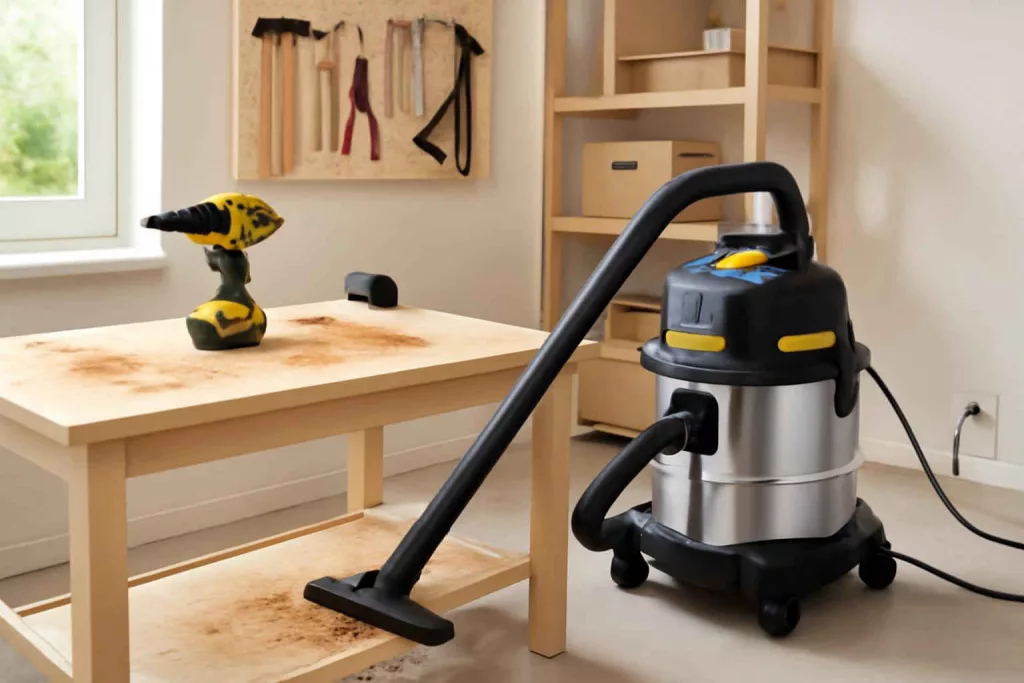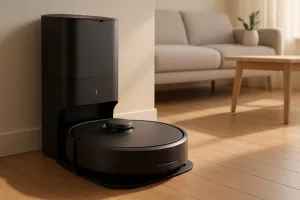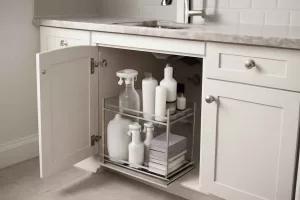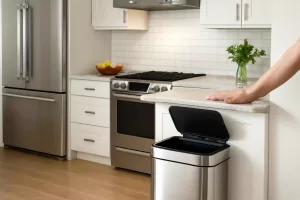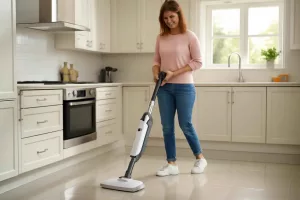Finding the right cleaning solution for your home workshop isn’t just about sweeping up sawdust or wiping down surfaces. A versatile corded wet/dry vacuum combines powerful suction, reliable performance, and the ability to handle both wet spills and dry debris, making it an essential tool for any serious DIYer. Whether you’re a woodworking enthusiast dealing with fine dust particles or a home mechanic tackling oil drips, choosing the best wet dry vacuum for home workshop use ensures a cleaner, safer environment.
In this guide, we’ll dive into the critical features you need to consider—from motor power and tank capacity to attachments and storage options. Plus, we’ll reveal top corded wet/dry vacuums that excel in real-world workshop conditions. Ready to streamline your cleanup routine? Start by shop for wet/dry vacuums to compare prices and specs instantly.
Why You Need a Wet/Dry Vacuum in Your Home Workshop
Versatile Cleaning for Dust and Debris
Traditional shop vacuums excel at collecting sawdust and larger debris, but many lack the versatility to handle liquid messes safely. A corded wet/dry vacuum bridges that gap by offering specialized filters and drainage ports designed for wet applications. In a woodworking setup, tiny dust particles can accumulate quickly, clinging to work surfaces and tools. Regular vacuum cleaners often struggle with the finer grit, and handheld models lack capacity. That’s where a dedicated wet/dry vacuum shines, seamlessly switching between wet and dry modes without manual filter swaps or risky exposure to moisture-sensitive components.
Handling Liquid Spills and Wet Messes
Accidental coolant leaks, spilled paint thinners, or simple water drip from a leaky workshop sink can halt projects and pose slip hazards. Wet/dry vacuums feature tank seals and drain hoses that make it safe and efficient to pick up liquids. Instead of mopping over sawdust mixed with water, these vacuums clear the mess in one pass—saving time and reducing bacterial growth. For those working on home repairs, having a reliable unit means you can address unexpected spills immediately, preventing damage and keeping your workspace productive.
Key Features to Consider Before Buying
Power and Suction Performance
When evaluating corded wet/dry vacuums, motor power (measured in amps) and airflow (CFM) are leading performance indicators. Higher amps generally translate to stronger suction, but efficiency also depends on impeller design and airflow path. Look for models offering at least 5 to 6 peak horsepower (HP) or 120+ CFM for heavy-duty workshop tasks. Brands often advertise “peak” horsepower—which represents a short-term maximum—while “continuous” horsepower is more realistic for prolonged use.
Tank Capacity and Material
Tank volume determines how often you need to empty debris or drain liquids. Smaller workshops might manage with a 2 to 4 gallon tank, but if you tackle large sanding projects or frequent spills, consider 8 gallons or more. Stainless steel tanks resist rust and corrosion over time, whereas plastic housings are lighter but may crack under heavy use. Balance capacity with portability, factoring in weight when full.
Hose Diameter and Attachments
A wide-diameter hose (1.5 to 2 inches) reduces clogs when picking up larger debris like wood chips and metal shavings. Check for versatile attachments such as crevice nozzles, brush attachments, and extension wands. A dedicated foam filter for wet use and a cartridge filter for dry operations ensure quick mode changes. Some models include specialized nozzles for upholstery or car detailing, expanding your vacuum’s utility beyond the workshop.
Portability and Storage Options
Consider overall weight, integrated wheels, and carry handles—especially if you plan to move the vacuum between workshop zones or climb ladders. Cord length and hose reach reduce the need for extension cords. Many modern designs include onboard storage for nozzles and power cords, minimizing clutter. If storage space is limited, look for detachable motors or compact collapsible hose systems that fit neatly on shelves.
Top Corded Wet/Dry Vacuums for Home Workshops
1. ShopMaster Pro 6-Gallon Stainless Steel Wet/Dry Vacuum
The ShopMaster Pro delivers a balanced combination of power and durability. Its 1,200-watt motor generates 135 CFM of airflow, effortlessly tackling sawdust piles and wet spills. The stainless steel tank resists corrosion, while the included 7-foot hose and multiple attachments make it ideal for cleaning corners, work benches, and tool surfaces.
Pros:
- Stainless steel for long-lasting durability.
- Multi-stage filtration system for finer dust collection.
- Onboard storage for accessories.
Cons:
- Heavier than plastic models when filled.
- Limited 6-gallon capacity may require frequent emptying during large projects.
2. CleanTech 8-Gallon Professional Wet/Dry Vacuum
CleanTech’s 8-gallon model steps up for larger shops and prolonged cleaning sessions. With a 6.5 HP motor and 150 CFM rating, it effortlessly picks up both fine dust and pooled liquids. The plastic construction keeps weight manageable, and the quick-release drain port simplifies emptying liquids. Bonus attachments include a large floor nozzle and a detailed brush head for electronics or tool surfaces.
Pros:
- High suction power for heavy-duty cleanup.
- Tool-free filter changes.
- Large drain port for fast liquid disposal.
Cons:
- Plastic tank may show wear under rough use.
- Included hose could be more flexible for tight spots.
3. ProVac 10-Gallon Heavy-Duty Workshop Vacuum
For serious workshop owners, the ProVac 10-Gallon model offers unmatched capacity and power. The 6.8 HP motor delivers 160 CFM, making quick work of thick dust clouds and water spills. Its stainless steel tank and integrated cord and hose storage ensure everything stays organized. A specialty filter kit for fine particulate matter makes this a top choice for woodworking enthusiasts.
Pros:
- Massive 10-gallon capacity reduces downtime.
- High airflow for demanding tasks.
- Comprehensive accessory set included.
Cons:
- Larger footprint requires dedicated storage space.
- Higher price point reflects professional-grade performance.
Maintenance and Care Tips for Longevity
Filter Cleaning and Replacement
Maintaining clean filters is crucial for optimum suction and motor health. After every project, remove the dust filter and gently tap it to dislodge debris. For foam filters used during wet pickup, rinse thoroughly and allow to air dry before reassembly. Replace cartridge filters every six to twelve months, or sooner if clogging persists. Maintaining filters properly avoids strain on the motor and extends vacuum life.
Proper Tank Drainage and Cleaning
Never store liquids in the tank for extended periods. After wet pickups, drain residual water through the designated port and wipe down the interior with a mild detergent solution to prevent mold. Ensure the tank is completely dry before storing to avoid corrosion or unpleasant odors. For hard-to-reach corners inside the tank, use a bottle brush or soft cloth.
Inspecting Hoses and Seals
Hose cracks or seal deterioration can reduce suction efficiency. Periodically inspect your hoses, gaskets, and clamps for wear or damage. Replace any section showing splits or brittleness. Lubricate O-rings on connectors using a silicone-based grease to maintain airtight seals.
Frequently Asked Questions
Should I Choose a Corded or Cordless Wet/Dry Vacuum?
Corded models provide consistent power and higher suction ratings, ideal for heavy-duty workshop applications. Cordless options offer portability but often lack the airflow required for dense debris and large spills. For stationary workshop setups, corded vacuums remain the top choice for reliability and performance.
Can I Use a Wet/Dry Vacuum for Automotive Work?
Absolutely. A versatile shop vacuum excels at picking up automotive fluids, metal shavings, and fine brake dust. Use specialized attachments to reach under seats and into engine compartments. Always check compatibility of filters when switching between wet and dry modes to protect the motor.
How Often Should I Empty the Tank?
For dry debris, empty the tank once it’s half full to maintain optimal suction. For wet pickups, drain liquids immediately after use to prevent bacterial growth and unpleasant odors. Larger capacity models can go longer between maintenance, but frequent inspections help avoid backup or damage.
Conclusion
A reliable corded wet/dry vacuum is a game-changer for any home workshop, tackling both sawdust and liquid messes with ease. From portability and power to filtration and capacity, the right model streamlines cleanup and enhances safety. Whether you’re a weekend woodworker or a full-time tinkerer, investing in one of our top picks—like the ShopMaster Pro or the ProVac 10-Gallon—will ensure your workspace remains clean, efficient, and ready for your next project.
Ready to upgrade your shop cleanup routine? Explore vacuum accessories and replacement filters now on Amazon for everything you need to keep your vacuum performing at its best.
For more dust management solutions, consider pairing your wet/dry vacuum with portable dust extractors or explore our DIY cyclone dust collector guide. To keep air compression tools running smoothly, check out our portable air compressors recommendations.
